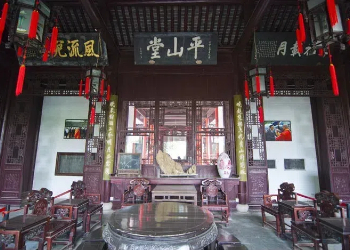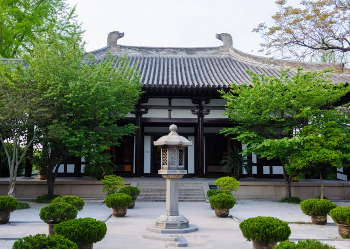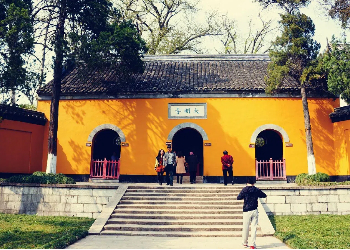 The Daming Temple
The Daming Temple
Daming Temple is an ancient monastery with profound historical depth and cultural connotations.
This temple is not only a famous historical site in Yangzhou but also an important venue for Sino-Japanese cultural exchange, attracting countless tourists and believers with its long history and unique charm. The architectural style of the Daming Temple is simple and elegant, integrating the essence of ancient Chinese traditional architecture. Inside the temple, the Mahavira Hall stands majestically, housing the Buddhist Trikaya statues, with wood carvings and colored paintings that are all precious works of art. The Daming Temple is known not only for its architecture and natural scenery but also for the monk Jianzhen. Jianzhen was a high monk of the Tang Dynasty who practiced here and made five eastward voyages to Japan to spread Buddhism. He eventually arrived and contributed significantly to the spread of Buddhist precepts and the construction of temple statues, making a great contribution to Sino-Japanese cultural exchange. To commemorate Jianzhen's achievements, a memorial hall for Jianzhen has been built within the temple, symbolizing the friendship between China and Japan.
Basic Information
Location: Daming Temple is situated on the middle peak of Shugang Hill in the northwest suburbs of Yangzhou City, Jiangsu Province, with the specific address at No. 8, Pingshantang East Road, Hanjiang District, Yangzhou.
Historical Background: It was initially built during the reign of Emperor Xiaowudi of the Song Dynasty in the Southern Dynasties (from 457 to 464 AD), possessing a history of over 1,550 years. It is one of the famous monasteries in ancient China.
Opening Hours: Daily from 08:00 to 17:00.
Ticket Price: 45 yuan per person.
Recommended Duration: 2 hours.
Main Buildings
Mahavira Hall
As the main building of the temple, Mahavira Hall stands out as particularly magnificent and spectacular. Inside the hall, three Buddhist deities are enshrined, presenting a solemn and awe-inspiring atmosphere. The woodcarvings and paintings are exquisite works of art, showcasing the superb craftsmanship and profound cultural heritage of ancient artisans.
Qiling Tower
Qiling Tower is the tallest building within Daming Temple, towering into the clouds and exhibiting a magnificent presence. Ascending to the top of the tower, visitors can overlook the beautiful scenery of the entire Yangzhou city, feeling refreshed and exhilarated. Although Qiling Tower is a modern reconstruction, its internal design is ingenious, featuring an elevator for the convenience of tourists to reach new heights and enjoy the spectacular views.
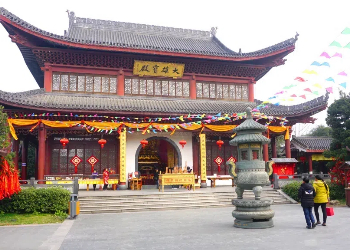
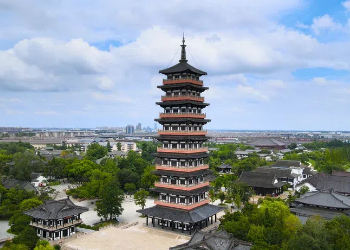
Pingshan Hall
Pingshan Hall was built by the famous Northern Song Dynasty litterateur Ouyang Xiu during his tenure as the prefect of Yangzhou, possessing a profound historical and cultural heritage. In front of the hall, flowers and trees are lush and abundant, creating a serene and pleasant courtyard environment. By leaning against the railing and gazing afar, the mountains of the Jiangnan region can be seen in full view, aligning perfectly with the horizon, hence its name Pingshan Hall. This place was once a gathering spot for literati and poets to compose and recite their verses, leaving behind many well-known poems.
Jianzhen Memorial Hall
Jianzhen Memorial Hall was built to commemorate the 1,200th anniversary of the passing of Monk Jianzhen, possessing far-reaching historical significance. As an important symbol of Sino-Japanese cultural exchanges, Jianzhen Memorial Hall not only displays the legendary life and outstanding contributions of Monk Jianzhen but also promotes friendly exchanges and cooperation between China and Japan. This place has become an important venue for tourists to understand the history of Sino-Japanese cultural exchanges and to commemorate the achievements of Monk Jianzhen.
